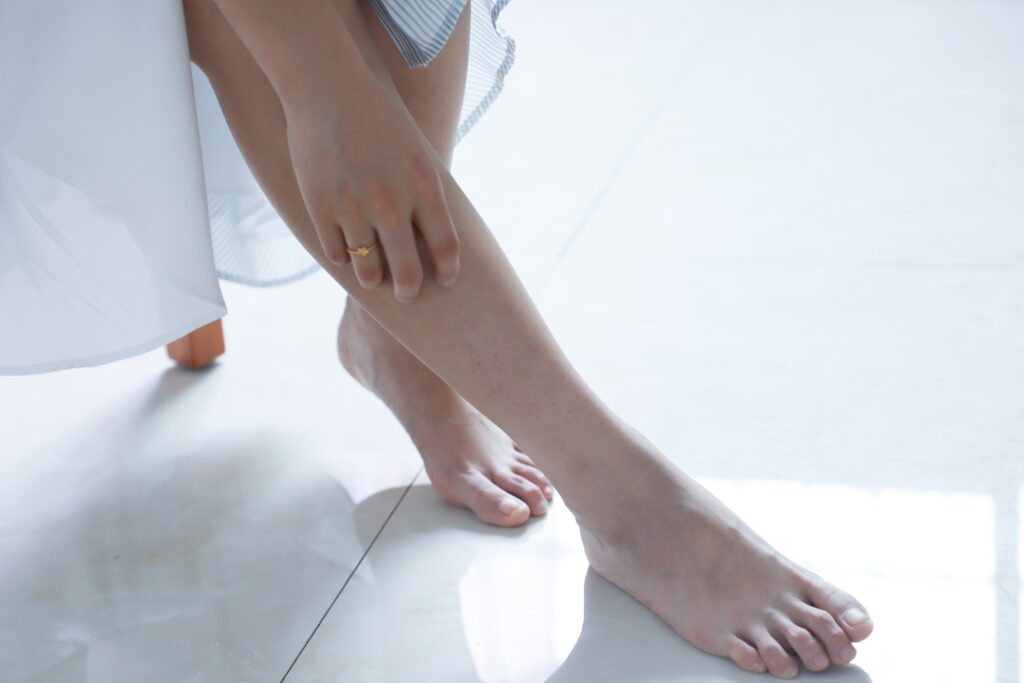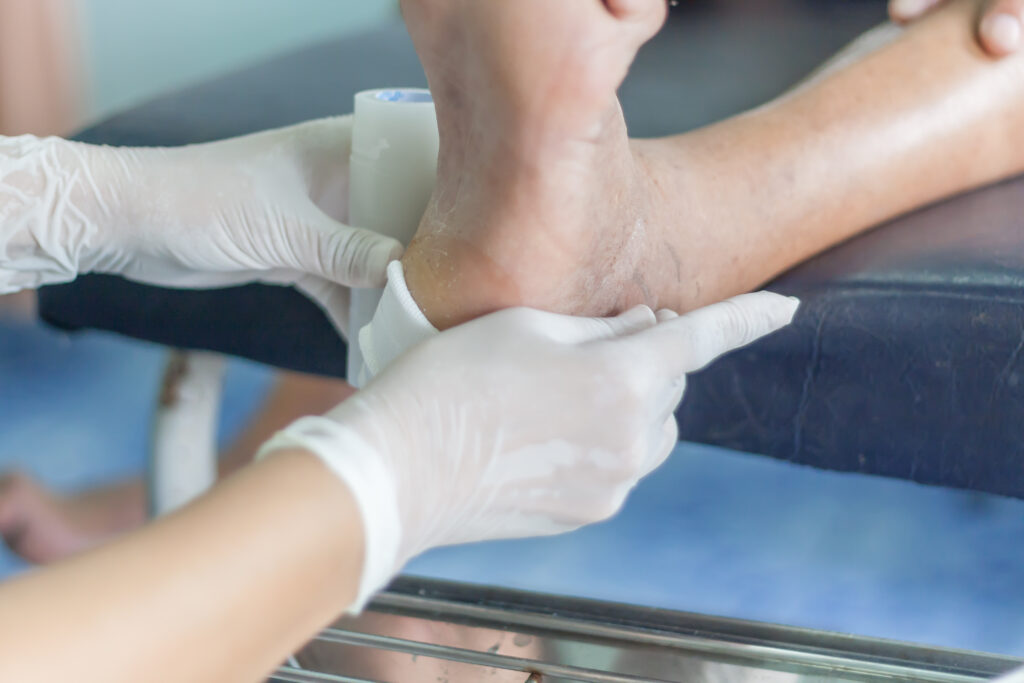At Raidmed we help people living with diabetes to easily monitor their feet to ensure that lower limb amputations are avoided.
We are currently developing a medical solution that allows diabetes sufferers and their clinicians to monitor foot health remotely. Diabetes can cause nerve damage and blood vessel disease in the feet, which can cause skin and tissue breakdown. This can develop into ulcers, which are prone to infection, sometimes leading to lower limb amputation.
Using our technology patients conducts a simple daily test in the comfort of their home or care setting. Cloud-based data from these tests provides the clinician with early warning of the signs associated with the risk of diabetic foot disease onset.

Diabetes is one of the most common diseases that affects people all over the world. There are more than 100 million diabetic patients in the world and this number is continuing to grow. Diabetes can also lead to amputations and nerve damage. This may seem scary, but it’s important for people with diabetes to understand how they can help prevent lower limb amputations as a result of their condition.
Number of people living with diabetes worldwide.
Diabetic foot ulcers diagnosed in US per year
Amputations from diabetes per year in USA.
Percentage of amputations which are avoidable
High blood sugar associated with diabetes damages organs and limbs by clogging arteries. In the feet, this means minor wounds don’t have the blood flow to fight off microbes, and small infections can turn lethal.
Removing the infected parts is often the last resort — a decaying toe or two, then the metatarsals, then a foot or a leg.
Excessive localised pressure on the sole of the foot can lead to inflammation (pain, redness), which can then lead to a foot ulcer if not addressed.
Diabetic foot ulcers take a long time to heal and often re-occur.


Decline in mobility can lead to social isolation, depression and the further deterioration of health. Between 52% and 80% of diabetic patients who get a below-the-knee amputation die within five years.
Diabetes care accounts for $1 in every $7 spent on healthcare in USA. An amputation can cost up to $100,000 and results in $18.8bn of direct healthcare costs per year.
Living with foot disease can be painful, affect people’s social lives and relationships, and even result in discrimination and reduced independence through lack of mobility.
Research from leading clinicians has shown that 80% of diabetic foot ulcers can be avoided through improved foot monitoring.
Managing your diabetes is a livelong task – but there a tools available to help you remain active and mobile through simple daily tasks. Self-monitoring of feet can be enhanced by observing the temperature profile of the foot – allowing pre-ulcerative hotspots to be identified at the earliest opportunity.
Checking your feet is easy
That issues are detected early.
Through our clinician portal.
Enabling many more years of active lifetsyle
Simple assisted foot check using the Raidmed system.
The patient app on your mobile device shows if there are any areas of concern and if contact should be made with a healthcare professional.
Enjoy your ulcer-free active day with the confidence that you are taking good care of your feet.

Good foot health allows you to keep mobile and active.
Clinical benefits of daily remote patient monitoring are well documented. The Raidmed solution allows pro-active management of your diabetic population with reimbursable technology.
Diabetic patients with medium to high risk of diabetic foot ulceration are prescribed the system.
Patient monitor their feet using the Raidmed system at home – sending results to clinical system.
Clinician is notified of any patients of concern due to anomalies in monitoring.
Remote patient monitoring of diabetic patients at risk of developing diabetic foot disease allows healthcare professionals to ensure the best outcomes for their patients and intervene at the earliest opportunity.
Identification of pre-ulcerative hotspots allows early intervention and significantly reduced healing time and costs.
Diabetic patient populations can be reviewed in a dashboard format to identify those patients who may need further consultation and possible intervention. Monitoring compliance is also displayed to assist in patient management.
Clinical reimbursement for solution deployment and ongoing monitoring.

Rely on us to augment your care.
Manage patients efficiently.
Latest User Experience thinking.
Based on familiar and easy models.
To grow an impactful Digital Health / Medtech company such as Raidmed takes significant investment. If you would like more information about our business plan and investment opportunities please complete this form.
See below for some recent posts and news articles.